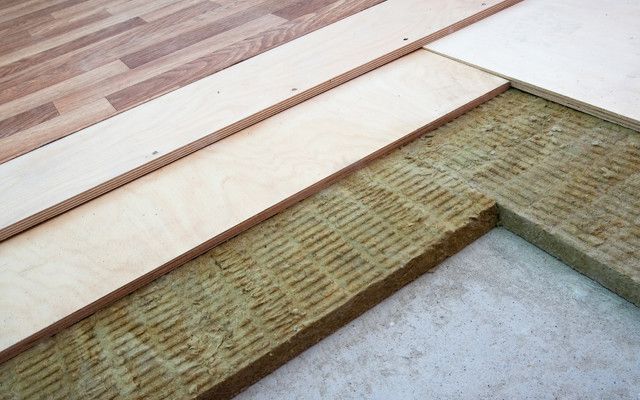Installing joists for the floor
The first step is to lay the joists that will form the basis for flooring sound insulation layer and a rough covering. To create lags uses the parallel bars with a thickness of 8-10 cm on Select items of lesser thickness is not necessary, because then it will decrease the reliability of the floor, and the ability to form qualitative sound-absorbing layer disappear. The joists are stacked on the floor with a pitch of about 60-80 cm to attach them to the work surface best with metal corners.
Laying sound insulating layer
Laid between the joists is the space that is used for laying insulation. Decent protection from extraneous sounds will be obtained if the roles of shumoizolyatory to use the already mentioned technical tube. It comes in the form of mats with a thickness of 5-15 cm, These mats fold into a roll for ease of transport and storage.
Roll technical tube is straightened and laid in "nests" between the joists. Moreover, you need to use a cloth tube of such width that they are firmly settled within the space. Provided that the material won't stretch in lag, decent sound insulation to fail. If there are gaps they must be filled with foam to improve insulation.
Flooring rough cover
To tube subsequently deteriorated, it must first be covered with polyethylene or other waterproof material. Further such layer is stacked draft coverage. For this you can use regular or floorboards. Instead the Board is sometimes used plywood or chipboard thickness of 18 mm. is So dry screed also received fairly reliable, but will have to carefully putty remaining in her joints.
The described method of soundproofing allows you to get a reliable floor with good protection from extraneous noise. It is worth remembering only that and through the other surface of the sound is also able to penetrate. Therefore, to manage exclusively the soundproofing of the floor impossible.
